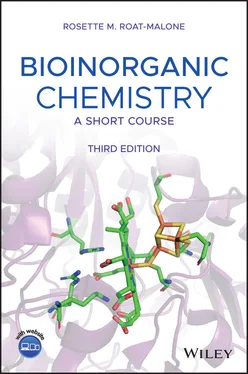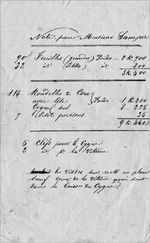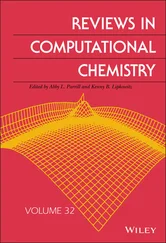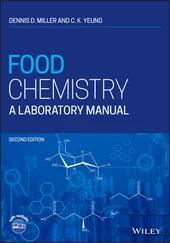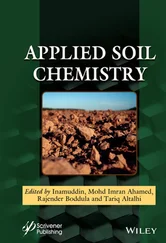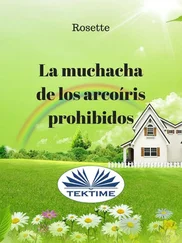1 COVER
2 PREFACE REFERENCES
3 ACKNOWLEDGMENTS
4 BIOGRAPHY
5 ABOUT THE COMPANION PAGE
6 1 INORGANIC CHEMISTRY AND BIOCHEMISTRY ESSENTIALS1.1 INTRODUCTION 1.2 ESSENTIAL CHEMICAL ELEMENTS 1.3 INORGANIC CHEMISTRY BASICS 1.4 ELECTRONIC AND GEOMETRIC STRUCTURES OF METALS IN BIOLOGICAL SYSTEMS 1.5 THERMODYNAMICS AND KINETICS 1.6 BIOORGANOMETALLIC CHEMISTRY 1.7 INORGANIC CHEMISTRY CONCLUSIONS 1.8 INTRODUCTION TO BIOCHEMISTRY 1.9 PROTEINS 1.10 DNA AND RNA BUILDING BLOCKS 1.11 A DESCRIPTIVE EXAMPLE: ELECTRON TRANSPORT THROUGH DNA 1.12 SUMMARY AND CONCLUSIONS 1.13 QUESTIONS AND THOUGHT PROBLEMS REFERENCES
7 2 COMPUTER HARDWARE, SOFTWARE, AND COMPUTATIONAL CHEMISTRY METHODS2.1 INTRODUCTION TO COMPUTER‐BASED METHODS 2.2 COMPUTER HARDWARE 2.3 COMPUTER SOFTWARE FOR CHEMISTRY 2.4 MOLECULAR MECHANICS (MM), MOLECULAR MODELING, AND MOLECULAR DYNAMICS (MD) 2.5 QUANTUM MECHANICS‐BASED COMPUTATIONAL METHODS 2.6 CONCLUSIONS ON HARDWARE, SOFTWARE, AND COMPUTATIONAL CHEMISTRY 2.7 DATABASES, VISUALIZATION TOOLS, NOMENCLATURE, AND OTHER ONLINE RESOURCES 2.8 QUESTIONS AND THOUGHT PROBLEMS REFERENCES
8 3 IMPORTANT METAL CENTERS IN PROTEINS 3.1 IRON CENTERS IN MYOGLOBIN AND HEMOGLOBIN 3.2 IRON CENTERS IN CYTOCHROMES 3.3 IRON–SULFUR CLUSTERS IN NITROGENASE 3.4 COPPER AND ZINC IN SUPEROXIDE DISMUTASE 3.5 METHANE MONOOXYGENASE 3.6 SUMMARY AND CONCLUSIONS 3.7 QUESTIONS AND THOUGHT PROBLEMS REFERENCES
9 4 HYDROGENASES, CARBONIC ANHYDRASES, NITROGEN CYCLE ENZYMES 4.1 INTRODUCTION 4.2 HYDROGENASES 4.3 CARBONIC ANHYDRASES 4.4 NITROGEN CYCLE ENZYMES 4.5 SUMMARY AND CONCLUSIONS 4.6 QUESTIONS AND THOUGHT PROBLEMS REFERENCES
10 5 NANOBIOINORGANIC CHEMISTRY5.1 INTRODUCTION TO NANOMATERIALS 5.2 ANALYTICAL METHODS 5.3 DNA ORIGAMI 5.4 METALLIZED DNA NANOMATERIALS 5.5 BIOIMAGING WITH NANOMATERIALS, NANOMEDICINE, AND CYTOTOXICITY 5.6 THERANOSTICS 5.7 NANOPARTICLE TOXICITY 5.8 SUMMARY AND CONCLUSIONS 5.9 QUESTIONS AND THOUGHT PROBLEMS REFERENCES
11 6 METALS IN MEDICINE, DISEASE STATES, DRUG DEVELOPMENT6.1 PLATINUM ANTICANCER AGENTS 6.2 RUTHENIUM COMPOUNDS AS ANTICANCER AGENTS 6.3 IRIDIUM AND OSMIUM ANTITUMOR AGENTS 6.4 OTHER ANTITUMOR AGENTS 6.5 BISMUTH DERIVATIVES AS ANTIBACTERIALS 6.6 DISEASE STATES, DRUG DISCOVERY, AND TREATMENTS 6.7 OTHER DISEASE STATES INVOLVING METALS 6.8 SUMMARY AND CONCLUSIONS 6.9 QUESTIONS AND THOUGHT PROBLEMS REFERENCES
12 INDEX
13 END USER LICENSE AGREEMENT
1 Chapter 1 TABLE 1.1 Percentage Composition of Selected Elements in the Human Body TABLE 1.2 Hard–soft Acid–base Classification of Metal Ions and Ligands... TABLE 1.3 Metals in Biological Systems: Charge Carriers TABLE 1.4 Metals in Biological Systems: Structural and Triggers TABLE 1.5 Metals in Biological Systems: Electron Transfer TABLE 1.6 Metals in Biological Systems: Dioxygen Transport TABLE 1.7 Metals in Biological Systems: Enzyme Catalysis TABLE 1.8 Ligand Contributions to the 16‐ or 18‐electron Rule TABLE 1.9 Nitrogenous Bases, Nucleosides, Nucleotides, and Sugars Found in DNA an... TABLE 1.10 Some Properties of A DNA, B DNA, and Z DNA
2 Chapter 2TABLE 2.1 Computing Units
3 Chapter 3TABLE 3.1 Cytochrome c Oxidase (CcO) Bond Distances: X‐ray Crystallographic, ...
4 Chapter 5TABLE 5.1 Metric Prefixes
5 Chapter 6TABLE 6.1 Comparison of IC 50Values for Pt, Ir, and Ru Antitumor Complexes
1 Chapter 1 Figure 1.1 Dose‐response curve for elements. Figure 1.2 Common transition metal coordination geometries. Figure 1.3 Ligand field splitting for d electrons in various ligand fields.... Figure 1.4 High‐spin and low‐spin electron configurations in an octahedral f... Figure 1.5 Electron configurations for high‐spin Cr(II) and Cu(II). Figure 1.6 Complexes obeying the 16‐e and 18‐e rule. Figure 1.7 (a) Rubredoxin. (b) [2Fe2S] cluster in ferredoxins. (c) [4Fe4S] c... Figure 1.8 Possible amino acid‐metal complexation structures found in metall... Figure 1.9 (a) Primary structure of a peptide chain. (b) Possible rotation a... Figure 1.10 Hydrogen bonding to form protein α‐helical and β‐pleated sheet s... Figure 1.11 Graphical representation of the Michaelis–Menten equation for no... Figure 1.12 Lineweaver–Burk plot for no inhibitor, competitive and noncompet... Figure 1.13 Watson–Crick base‐pairing in DNA. Figure 1.14 Complimentary antiparallel double‐stranded (ds) DNA (dsDNA). Figure 1.15 Orientations found in DNA helices. Figure 1.16 Schematic representation of replication, transcription, and tran... Figure 1.17 (a) Cas9 (green); crRNA (orange); tracrRNA (purple); PAM sequenc... Figure 1.18 Visualization of Cas9 ribonucleoprotein (RNP) from PDB 4UNS [24]... Figure 1.19 A ruthenium complex that can detect a DNA mismatch. PDB 4E1U dat... Figure 1.20 Cyclic voltammetry of wild‐type and mutant EndoIII from figure 6... Figure 1.21 Structures for counting electrons using 16‐ and 18‐electron rule.
2 Chapter 2Figure 2.1 Example of a People's Split Valence Basis Set.Figure 2.2 Structure of the binuclear center (BNC) of protein data bank (PDB...
3 Chapter 3Figure 3.1 Dioxygen bound to myoglobin heme. Visualization from reference [1...Figure 3.2 Heme protoporphyrin IX (heme b) as found in Hb, Mb, and some cyto...Figure 3.3 Quaternary structure protein data bank (PDB) 4HHB.Figure 3.4 T and R states for iron hemes in Hb.Figure 3.5 Heme group from PDBe 5M3L as determined by cryo‐electron microsco...Figure 3.6 Possible O 2‐binding modes in hemoglobin.Figure 3.7 Heme a in Cytochrome c Oxidase (CcO).Figure 3.8 CcO CuA, Heme a, and the binuclear center (BNC) as visualized wit...Figure 3.9 Cytochrome c oxidase catalytic cycle.Figure 3.10 Proposed O–O cleavage mechanism in heme‐copper oxidases (HCOs) w...Figure 3.11 Cytochrome c oxidase (CcO) catalytic center intermediates.Figure 3.12 H K and D channels in cytochrome c oxidase using PDB 1V54 data a...Figure 3.13 Cytochrome c oxidase (CcO) Model Compounds.Figure 3.14 Reaction of a CcO model compound illustrating homolytic dioxygen...Figure 3.15 Reaction of LS‐AN, a CcO model compound, with a phenol (PhOH)....Figure 3.16 Water molecules and the H‐bonding amino acid residue side chains...Figure 3.17 FeMo cofactor (M‐cluster) in the MoFe protein of nitrogenase as ...Figure 3.18 PDB 4WN9 FeMo cofactor used in QM/QM’ calculations by Rao et al....Figure 3.19 Lowe‐Thorneley cycle proposed by Rao et al. [71].Figure 3.20 Relative Gibbs free energies for the E4 state reaction path [71]...Figure 3.21 Distal, alternating, hybrid hydrogenation of N 2to form NH 3.Figure 3.22 Pathways from the protein surface to nitrogenase's active site. ...Figure 3.23 Molybdenum complex producing NH 3from N 2[79] .Figure 3.24 Reactions producing NH 3from N 2.Figure 3.25 Reduction system for N 2to NH 3.Figure 3.26 Fe–dinitrogen complex with Tp Ph,Meligands.Figure 3.27 Model complex with adamantane (Ad) substituents [91].Figure 3.28 Model complex with boron central atom.Figure 3.29 Hydrogen evolution from a nitrogenase functional model [93].Figure 3.30 P‐Cluster Model Compound.Figure 3.31 Starting materials for FeMo‐cofactor structural model from refer...Figure 3.32 FeMoco‐factor Model Compound.Figure 3.33 Active Site of copper–zinc superoxide dismutase (CuZnSOD).Figure 3.34 (a) CuZn SOD1 dimer PDB 1E9P. (b) CuZn SOD1 dimer PDB 1L3N.Figure 3.35 Proposed SOD3 Mechanism.Figure 3.36 Superoxide dismutase (SOD) Model Compound Ligands.Figure 3.37 (a) PDB 1MTY [110] active site in α subunit of MMOH (H 2O/OH −...Figure 3.38 (a) Possible Q (a diiron species) structures in the mechanism fo...Figure 3.39 Metal centers and visualization of pmoB, pmoA, and pmoC for PDB ...
4 Chapter 4Figure 4.1 Active Site of [NiFe] hydrogenase as visualized from PDB 5XLH [1]...Figure 4.2 Comparison [FeFe] hydrogenase with gamma oxygen versus gamma carb.
Читать дальше
